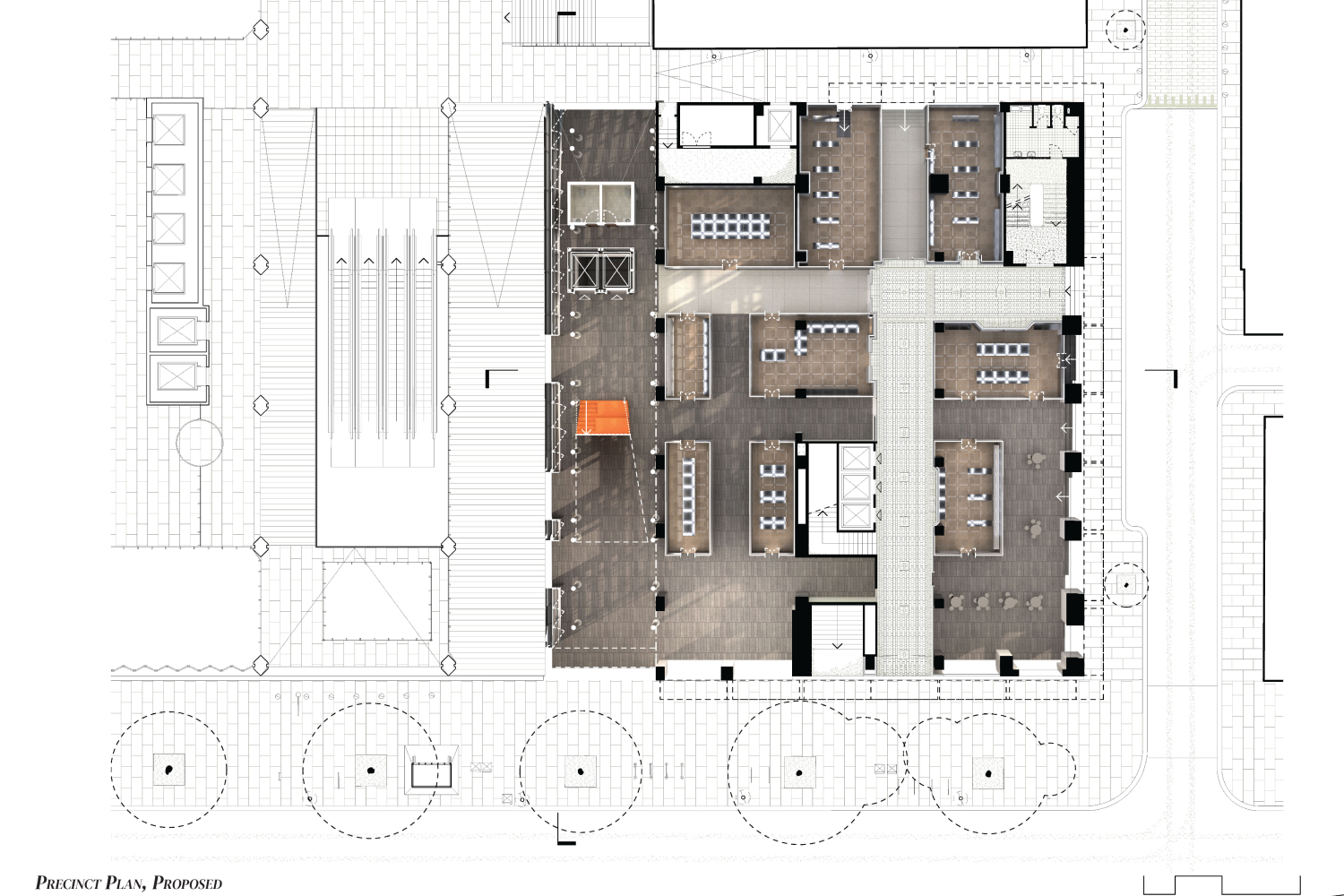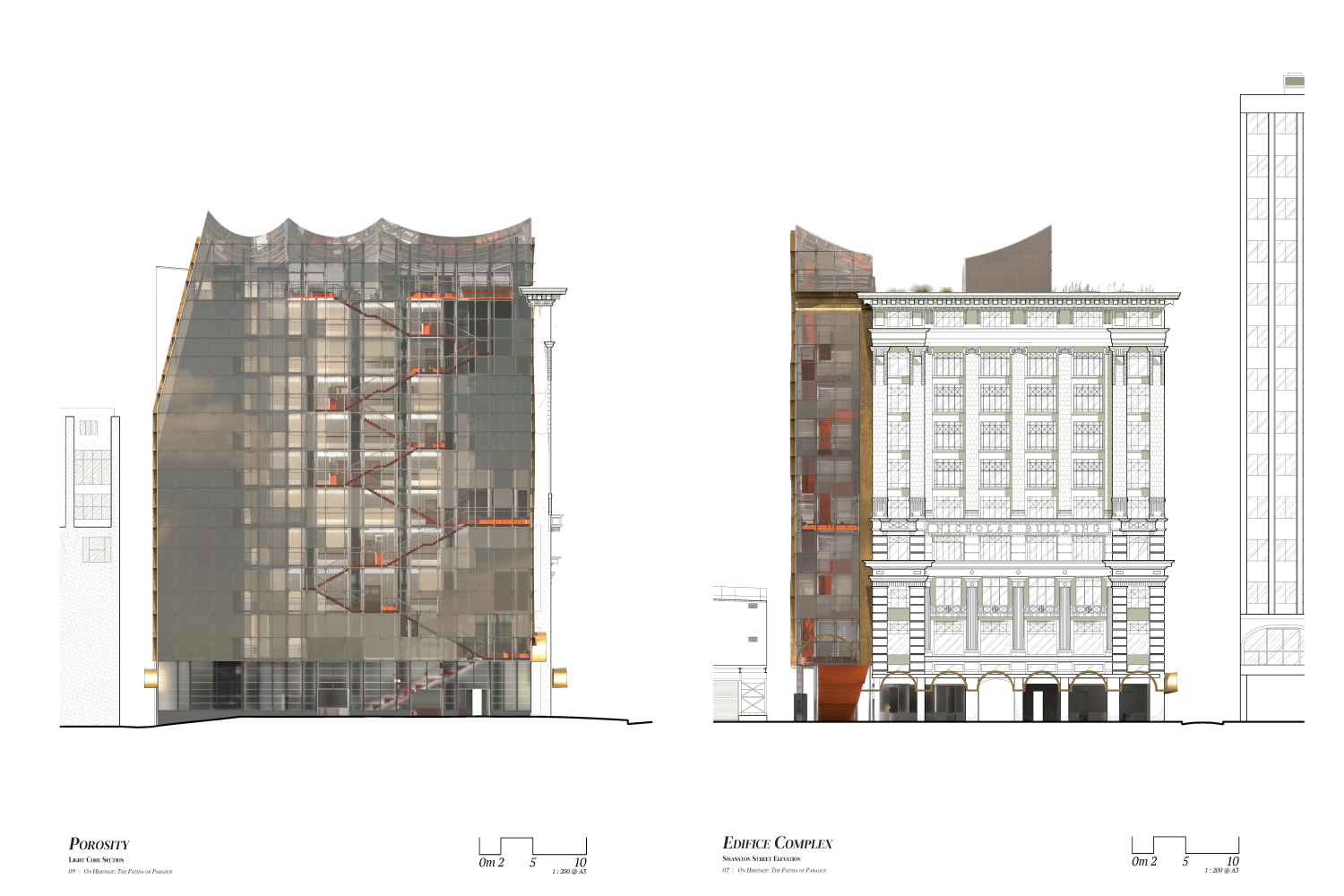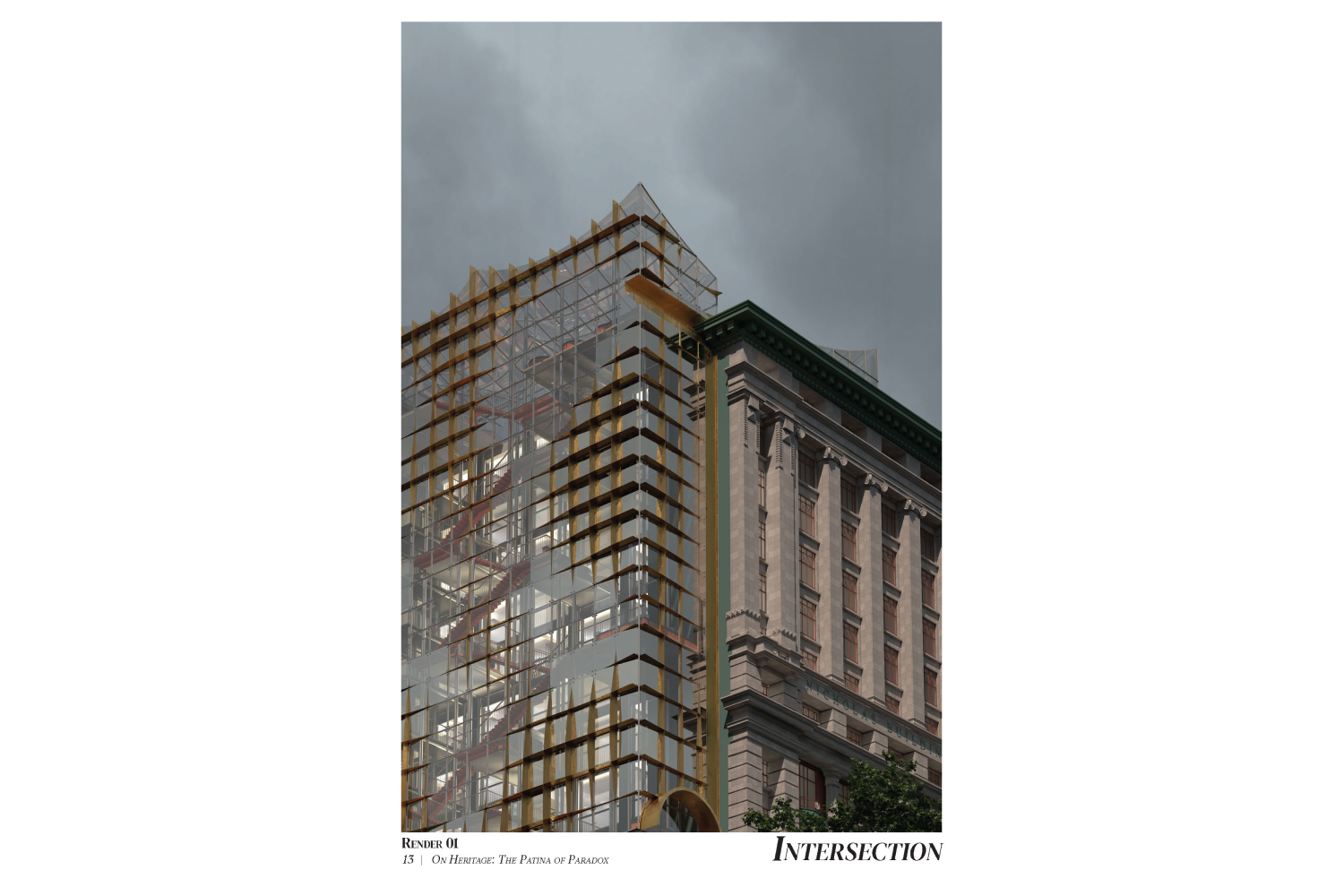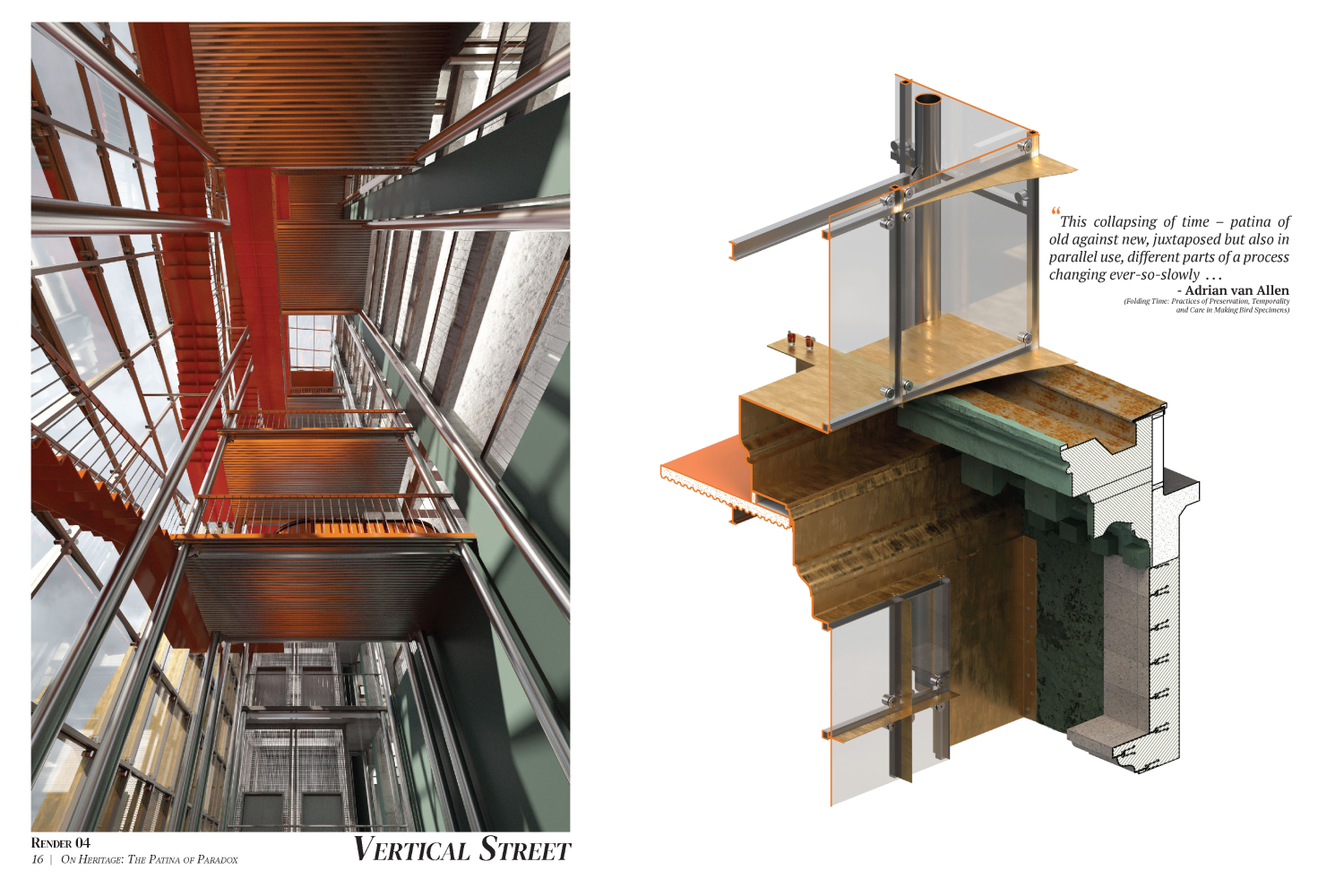Preservation and heritage, as it is conventionally practised, is fundamentally a paradox. The accreted markers of use and age are valued for the history they embody, yet they are discouraged from further development – against the continuous flow of history and time – this is the paradox of patina.
Examining Melbourne’s Nicholas Building as a case study, a new approach to heritage preservation has been tested in a manner that acknowledges consistency yet necessitates change, those characteristics that make the building worth preserving are amplified while acknowledging the shifting contextual relationship between the city and the building.
Too often heritage-listed buildings are deemed too significant to change – instead left to rot until the skeleton of a façade can be filled with a yield-maximising extrusion. This thesis proposes a new, proactive approach to heritage, particularly within a dense urban context.
Rather than simplifying a heritage building into a self-evident signifier of its own history, amplification and display have been explored as a means of bringing forth a building’s patina while facilitating its continued development. The idiosyncratic history and occupants of the Nicholas Building (built 1926) have been dissected, its internals exposed to bring the building, its occupants, and their city crashing together. Resulting in a frictional yet generative tandem, with each other and their own tangled histories.





